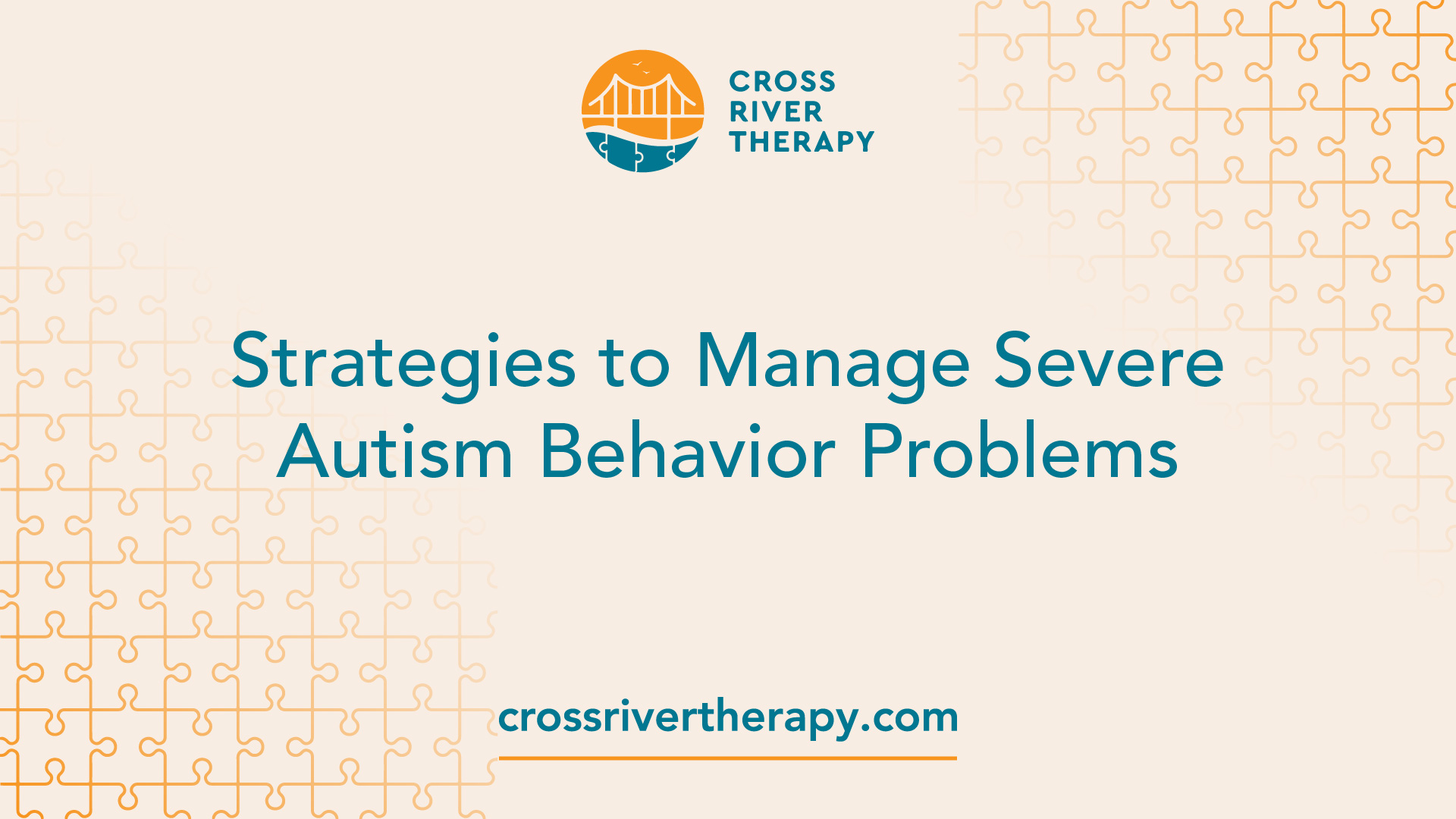When working with an Aba Therapist Near Me, families see big changes in social and communication growth
When working with an Aba Therapist Near Me, families see big changes in social and communication growth
Blog Article
Recognizing the Influence of Behavioral Autism on Every Day Life and Social Communications
You may not realize exactly how deeply behavioral autism impacts daily life and social interactions. Individuals on the spectrum typically browse a globe filled up with communication obstacles and sensory overload. These difficulties can lead to frustration and seclusion, affecting their connections and overall health.
Defining Behavioral Autism and Its Attributes
Behavior autism, often referred to as autism spectrum problem (ASD), incorporates a series of problems characterized by difficulties in social communication, communication, and recurring behaviors. You could see that individuals with ASD usually have a hard time to interpret social cues, which can cause misunderstandings in discussions. They may locate it hard to establish eye contact or take part in little talk, making social situations really feel frustrating.
Communication difficulties can show up in various means, from postponed speech advancement to a choice for making use of less words. By identifying these characteristics, you can foster an environment that promotes approval and motivates effective communication, assisting people with autism prosper in their day-to-day communications.
The Range of Autism: Recognizing Irregularity in Actions
Autism range condition (ASD) isn't a one-size-fits-all diagnosis; it differs extensively amongst individuals. You may encounter individuals who are very verbal and engage conveniently in conversations, while others might prefer solitary tasks or interact non-verbally.
Furthermore, the way people with ASD reply to sensory input can differ considerably; some could be overwhelmed by intense lights or loud noises, whereas others thrive in stimulating settings. The spectrum also consists of distinctions in social communications; some people may have a hard time to interpret social signs, while others browse social setups with loved one simplicity. Recognizing this irregularity is crucial, as it aids you value each person's unique experience and dressmaker support to their particular requirements, fostering a much more comprehensive atmosphere for every person.
Communication Obstacles Faced by Individuals With Autism
When you connect with individuals on the autism spectrum, you might discover their distinct communication difficulties. They commonly face problems with both spoken and nonverbal cues, which can influence their social interactions. Comprehending these obstacles is necessary for promoting much better links and support.

Verbal Communication Troubles
Numerous individuals on the autism range experience spoken interaction difficulties that can significantly influence their day-to-day communications. You might discover it challenging to reveal your ideas, sensations, or needs clearly. This can cause frustration for both you and those around you, as misunderstandings happen. You might battle with initiating conversations, maintaining a topic, or comprehending nuances in speech. Commonly, you could favor using simple language or repetitive expressions, which can restrict your capability to participate in deeper discussions. Your quantity, pace, or tone may not line up with social expectations, creating others to misinterpret your intentions. Recognizing these challenges can aid you and your assistance network establish strategies to enhance interaction and cultivate better links with others in your life.
Nonverbal Interaction Barriers
Spoken communication isn't the only obstacle people on the autism spectrum face; nonverbal communication barriers can be simply as considerable. You could discover it challenging to translate body language, face expressions, and eye get in touch with, which are vital for effective interaction. These obstacles can result in misconceptions or false impressions of social hints, making communications really feel overwhelming or complex. You might struggle to share your very own emotions via nonverbal ways, leaving others uncertain of your purposes or sensations. This separate can create sensations of seclusion and aggravation. Identifying these obstacles is crucial for cultivating understanding and empathy in your interactions. By attending to nonverbal interaction, you can find methods to enhance your social experiences and boost your general top quality of life.
Social Interaction Effects
Social communications can commonly feel overwhelming due to the unique interaction obstacles dealt with by people with autism. Acknowledging these challenges can assist you discover methods to improve interaction, such as practicing social abilities in risk-free setups or using visual help. Recognizing your requirements allows you to browse social communications with greater self-confidence and ease.
Social Interaction and Partnership Building in Autism
While building partnerships can be challenging for people helpful site with autism, understanding their unique point of views and communication styles can foster meaningful links. You could observe that several people on the spectrum favor direct interaction and might struggle with social cues or little talk. By being uncomplicated in your interactions, you can assist create a setting where they feel comfortable.
Make the effort to listen and observe how they share themselves. This insight can guide you in steering conversations better. Taking part in shared interests can also function as a bridge to deeper links. Whether it's a leisure activity, a favored show, or a shared interest, these common threads can open doors to friendship.
Daily Life Regimen: Navigating Obstacles and Approaches
Maneuvering everyday life routines can be specifically testing for people with autism, specifically when unforeseen adjustments take place. To navigate these difficulties, take into consideration carrying out aesthetic schedules or lists.
Establishing a routine that consists of sensory breaks can additionally be advantageous. You can prepare short breaks throughout your day to recharge. It's essential to communicate with those around you, allowing them know your choices and requirements. This aids develop an understanding atmosphere.
Finally, practice mindfulness techniques to handle stress and anxiety and anxiousness. Easy breathing workouts or basing methods can make a considerable distinction. By including these techniques, you can enhance your day-to-day regimen and straight from the source minimize disruptions, making life really feel a lot more workable.
Staminas and Abilities of People on the Autism Spectrum
Comprehending every day life regimens is simply one element of the autism experience. Numerous people on the autism range possess exceptional strengths and capabilities that establish them apart. You might locate that your interest to detail is extraordinary, permitting you to master jobs that call for accuracy and focus. Your capacity to assume outside the box can cause cutting-edge solutions in various situations.
Additionally, your memory abilities frequently radiate, particularly in locations of rate of interest. Autism Spectrum Therapies. This propensity for maintaining info can make you a valuable source in areas like art, technology, or science. You may additionally display strong aesthetic reasoning, allowing you to picture complicated ideas and solve problems creatively
In addition, your distinct viewpoint on the world can cultivate compassion and understanding in others, improving social communications. Welcoming these staminas not only increases your self-confidence but additionally helps others appreciate the diverse abilities you offer the table.
Producing Comprehensive Settings for People With Autism
Creating inclusive environments for people with autism begins with making sensory-friendly rooms that satisfy their distinct demands. You can likewise foster opportunities for social interaction, aiding to develop links and friendships. By making these adjustments, you'll add to a more inviting environment for every person.
Creating Sensory-Friendly Spaces
While making sensory-friendly spaces, it's essential to show on the one-of-a-kind requirements of people with autism. Begin by choosing calming shades and soft illumination to create a relaxing atmosphere. Include quiet areas where individuals can recharge and pull away when overwhelmed. You'll want to reduce loud noises and distractions, using soundproof products or white noise equipments to help maintain peace. Consider tactile components like soft fabrics or fidget-friendly objects that can give convenience. Identify that spaces are versatile, enabling easy reformation to suit various tasks. Finally, consist of visual schedules or clear signage to aid people browse the space confidently. By thoughtfully integrating these elements, you can produce a welcoming ambience that sustains sensory requirements and advertises general wellness.
Promoting Social Communication Opportunities
Designing sensory-friendly spaces not just addresses specific comfort yet likewise establishes the phase for significant social communications among people with autism. To advertise these communications, develop comprehensive atmospheres that welcome participation. Arrange structured activities, like art classes or team video games, that urge partnership without overwhelming sensory input. Usage visual aids and clear communication to assist everybody engage comfortably. Urge peer mentoring, coupling individuals with autism with supportive peers that can lead them with social scenarios. Furthermore, take into consideration organizing regular neighborhood events that celebrate neurodiversity, promoting acceptance click for more and understanding amongst all participants. By executing these strategies, you can enhance social chances, helping individuals with autism develop friendships and enhance their social skills in a safe, inviting atmosphere.

Regularly Asked Concerns
How Can Buddies Support A Person With Behavioral Autism?
You can support a buddy with behavior autism by holding your horses, paying attention proactively, and appreciating their limits. Participate in activities they appreciate, interact openly, and create a comfy atmosphere where they feel valued and understood.
What Resources Are Available for Parents of Children With Autism?
You can check out numerous sources for moms and dads of children with autism, including support groups, educational internet sites, and neighborhood area services. Linking with other parents can also offer important understandings and shared experiences to aid navigate obstacles.
Can Behavioral Autism Adjustment With Time?

Yes, behavior autism can change gradually. You might notice shifts in interaction, social skills, and actions as your child expands. Early intervention and assistance usually play essential roles in these developing adjustments.
How Do Sensory Sensitivities Affect Daily Life?
Sensory sensitivities can make day-to-day experiences overwhelming. You could deal with loud sounds or bright lights, leading to stress or avoidance. Finding settings that accommodate your requirements can considerably improve your convenience and general every day life.
What Are Common Misconceptions Concerning Behavioral Autism?
You could assume behavioral autism just impacts communication abilities, however it's even more complex. Numerous presume people lack compassion or intelligence, which isn't true. Comprehending these misunderstandings aids foster acceptance and assistance for those on the range.
Behavior autism, commonly referred to as autism range disorder (ASD), includes a variety of conditions characterized by difficulties in social communication, interaction, and recurring actions.Social interactions can often feel frustrating due to the special communication challenges faced by individuals with autism.Creating sensory-friendly spaces not only addresses private comfort but likewise establishes the stage for significant social interactions among individuals with autism. Encourage peer mentoring, pairing people with autism with helpful peers that can assist them with social situations. By applying these techniques, you can enhance social opportunities, assisting people with autism build friendships and strengthen their social abilities in a risk-free, inviting setting.
Report this page